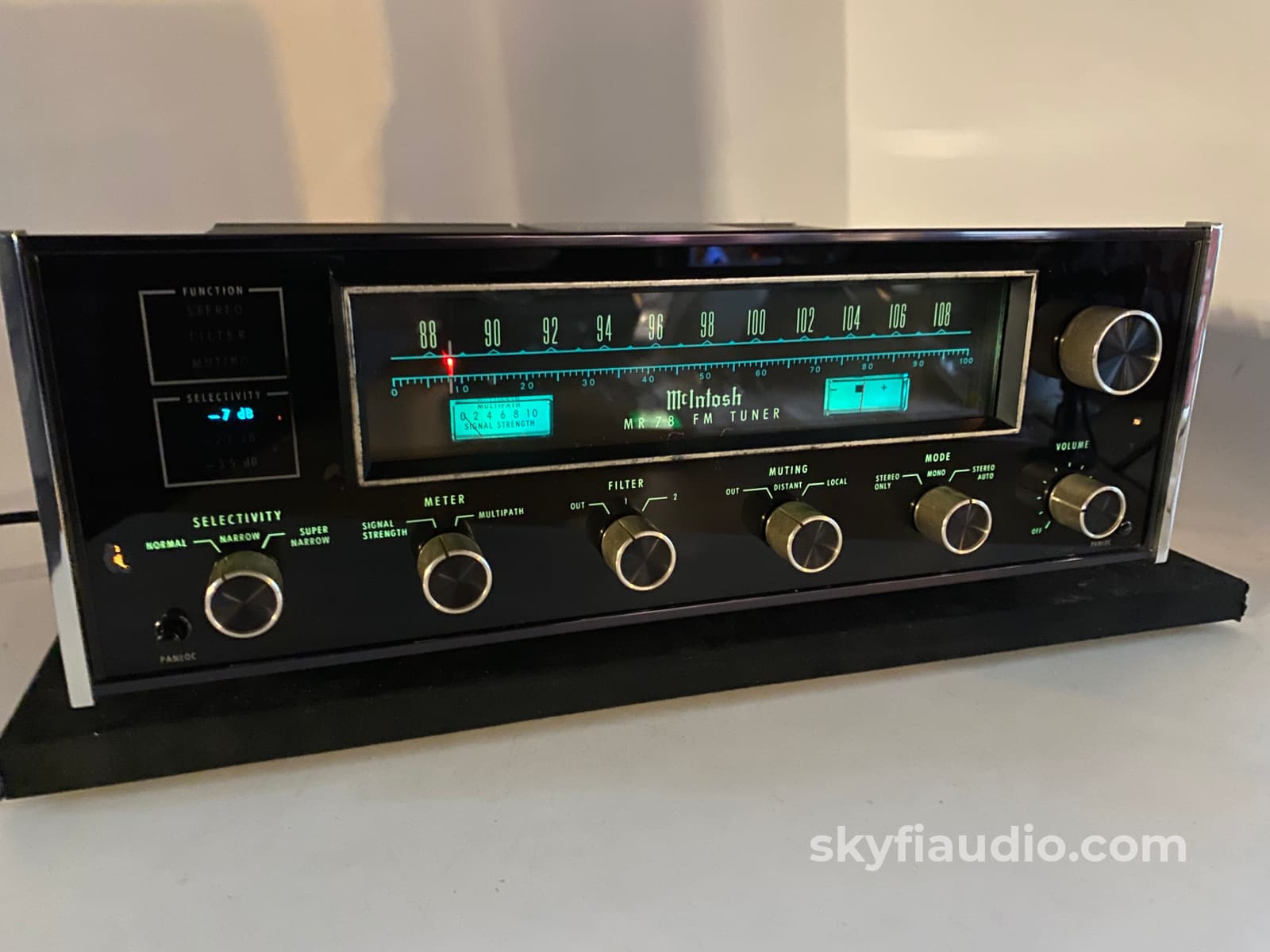
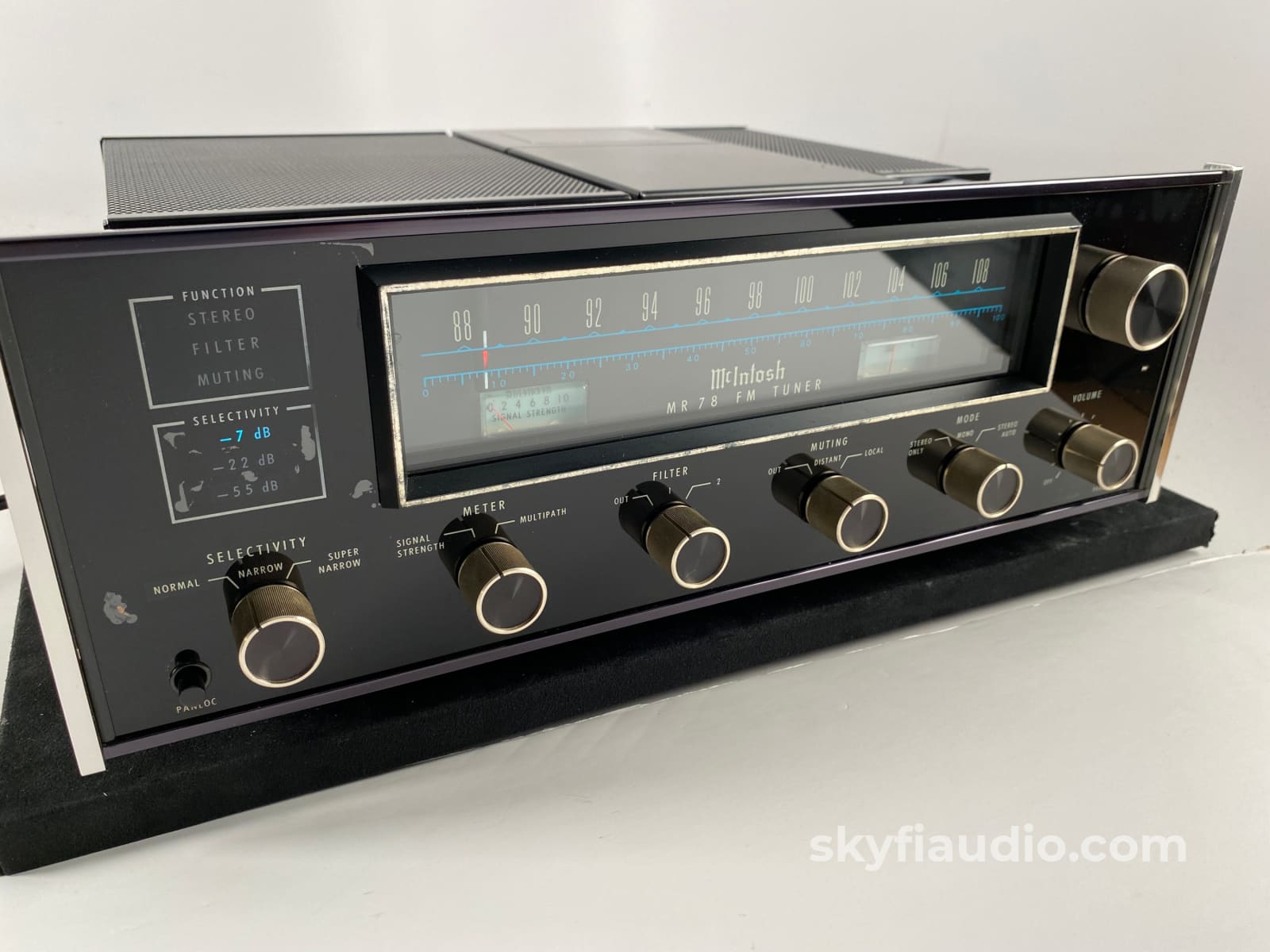


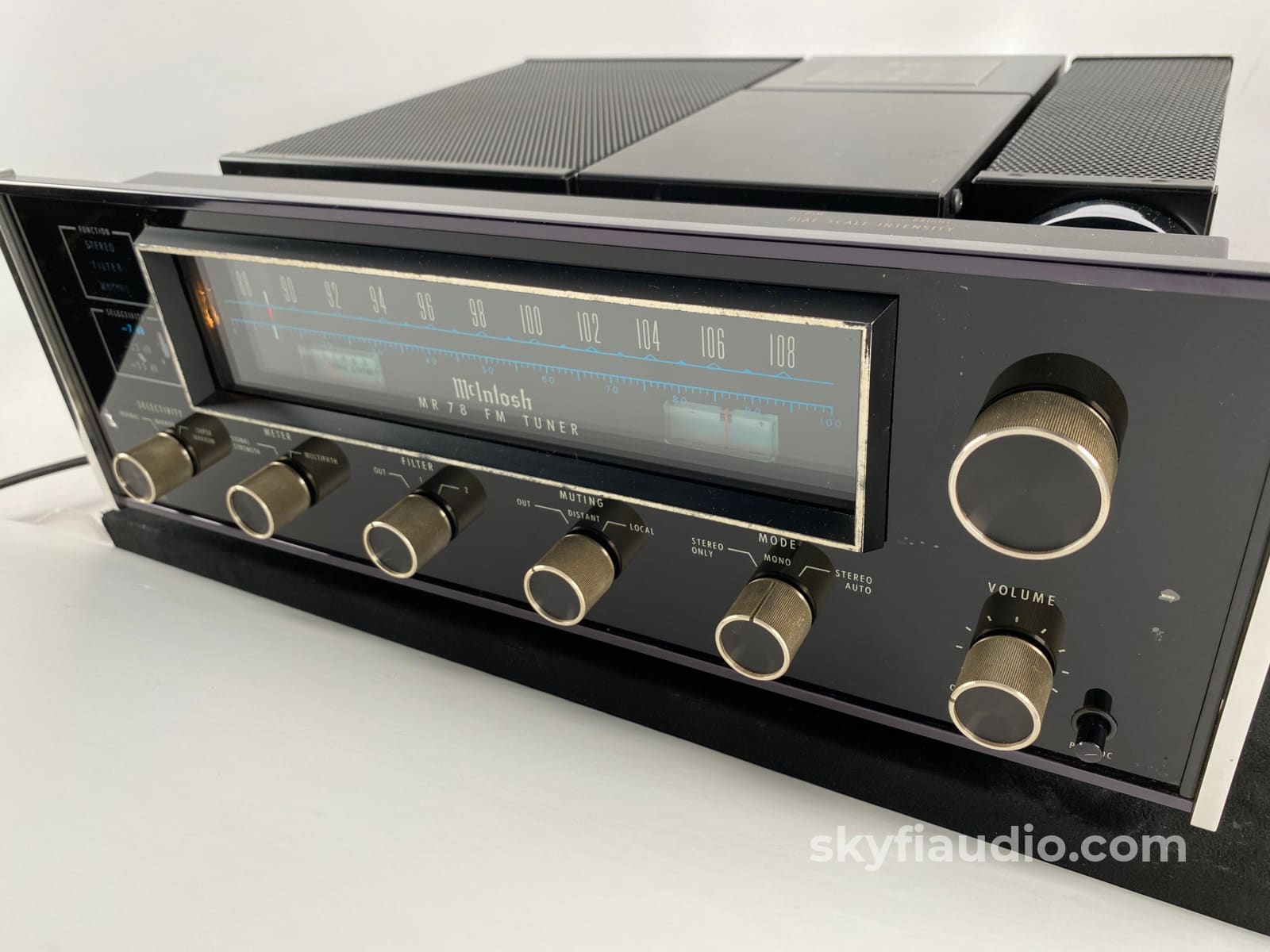
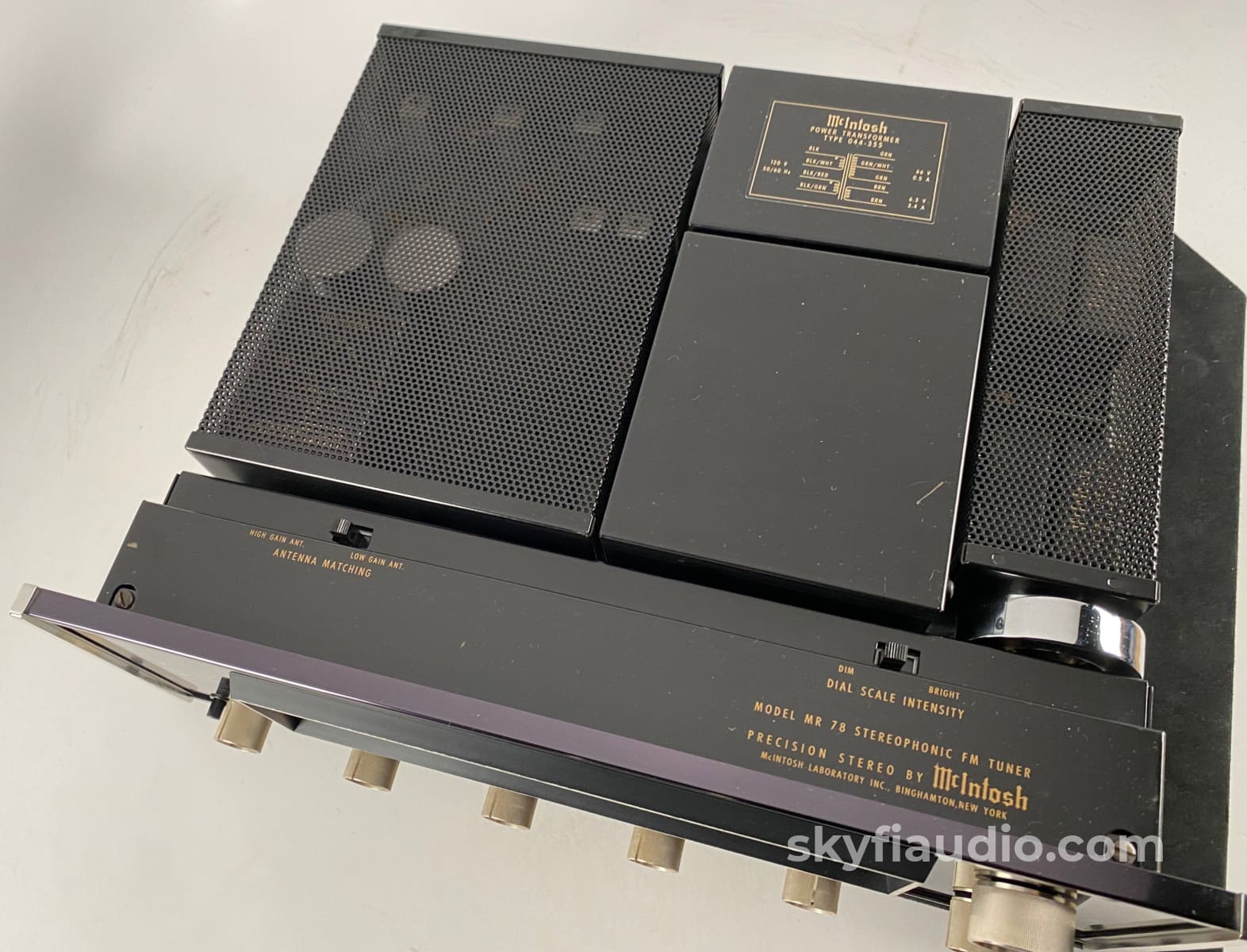
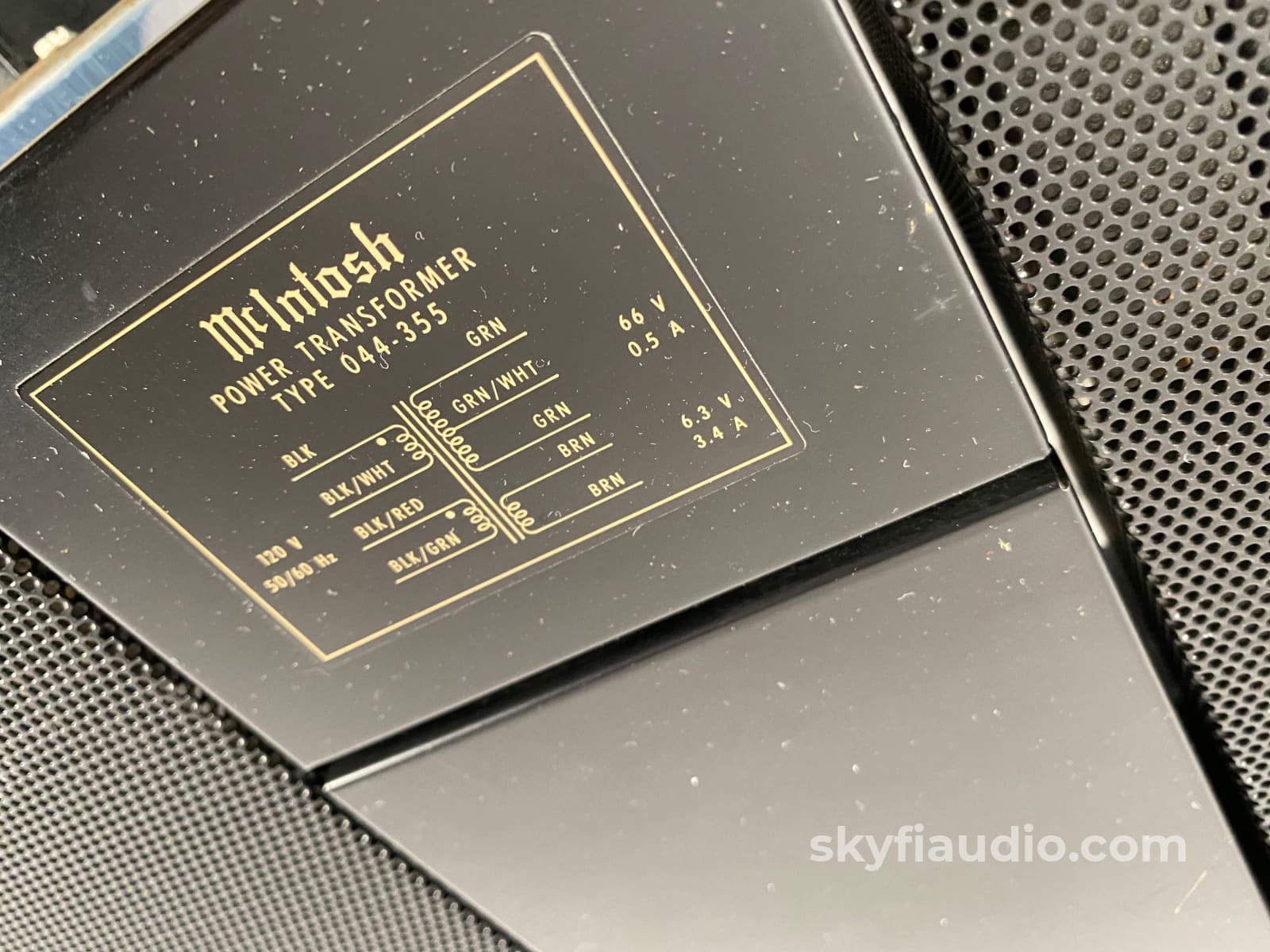
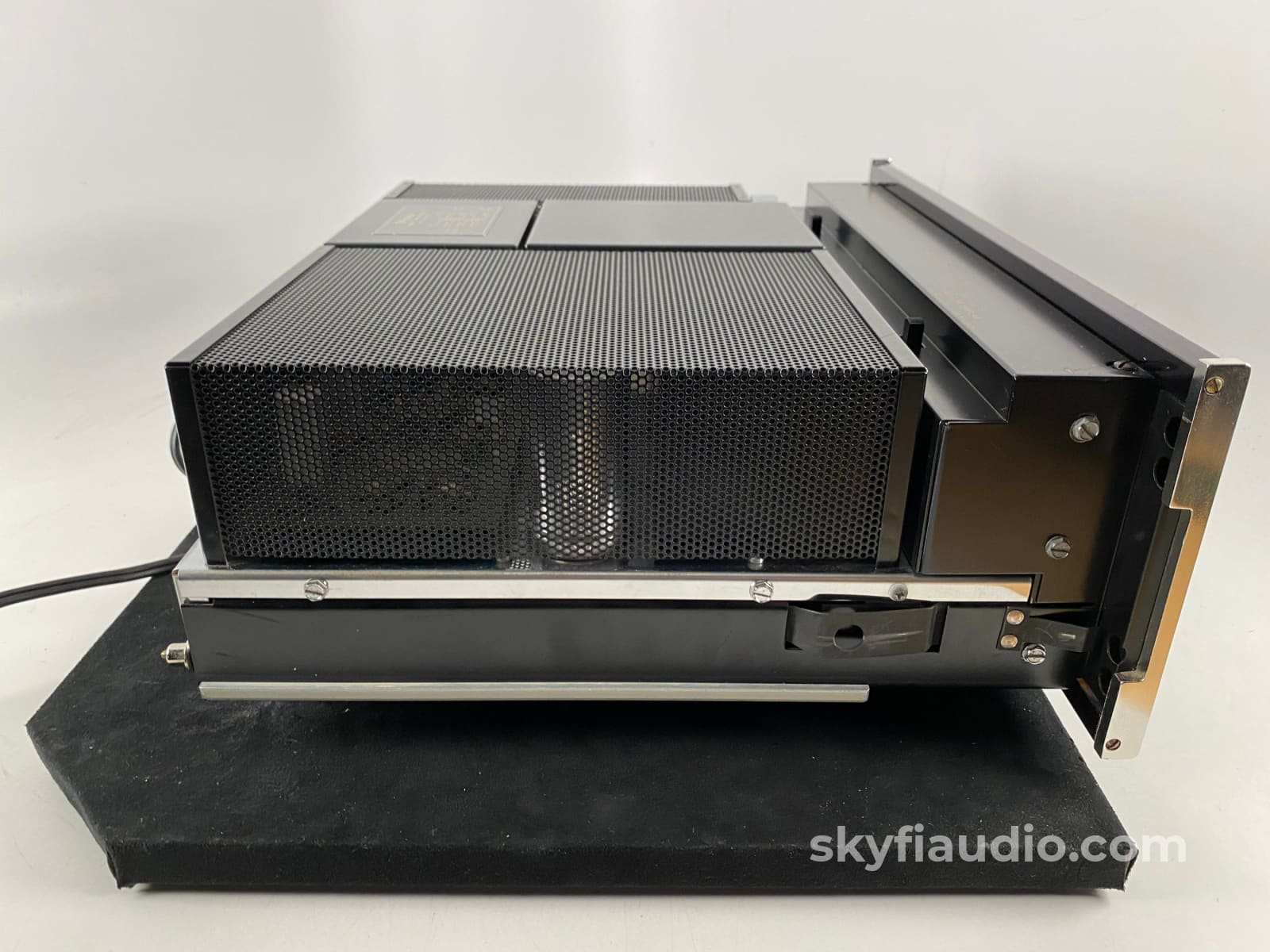
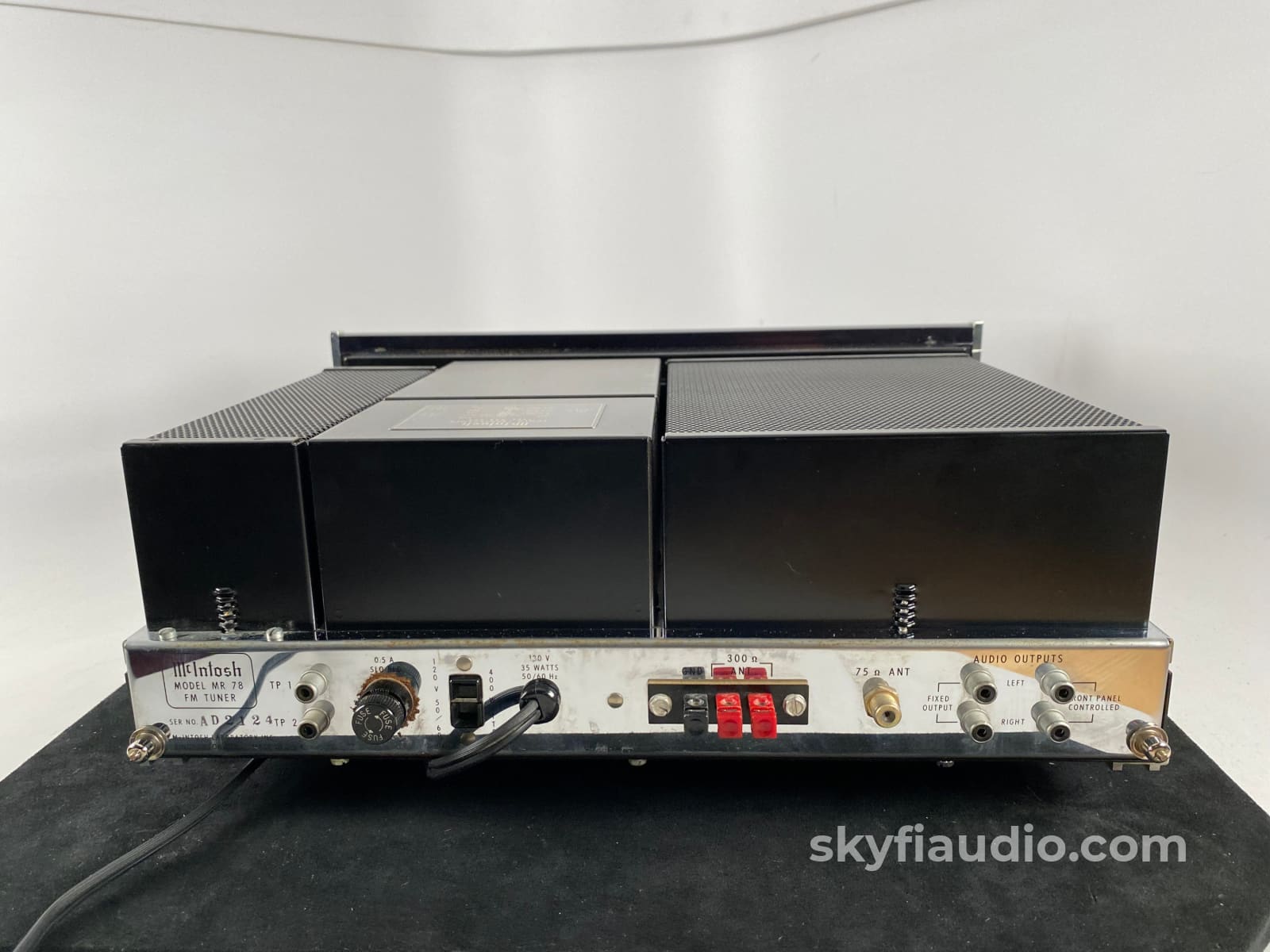
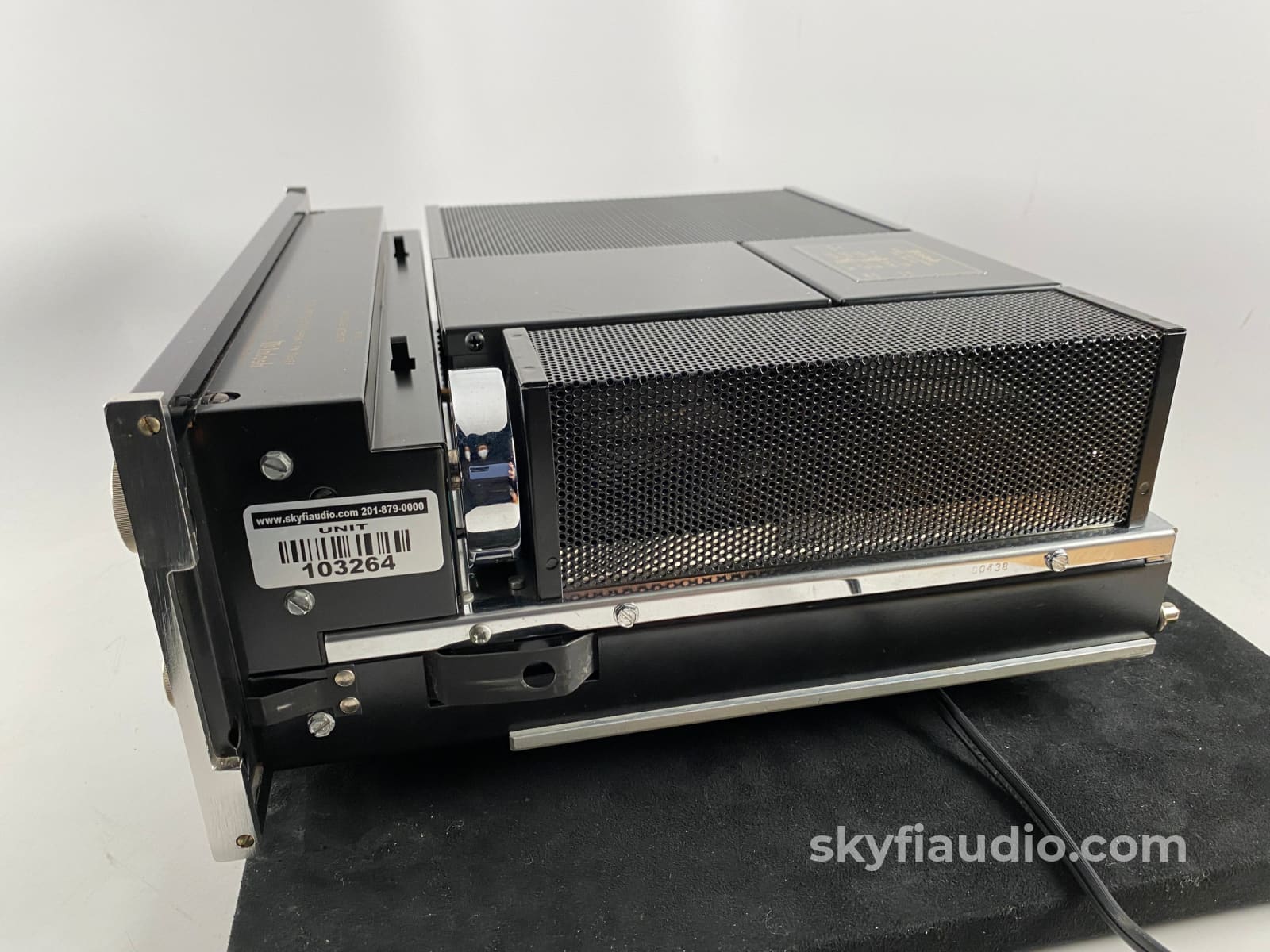
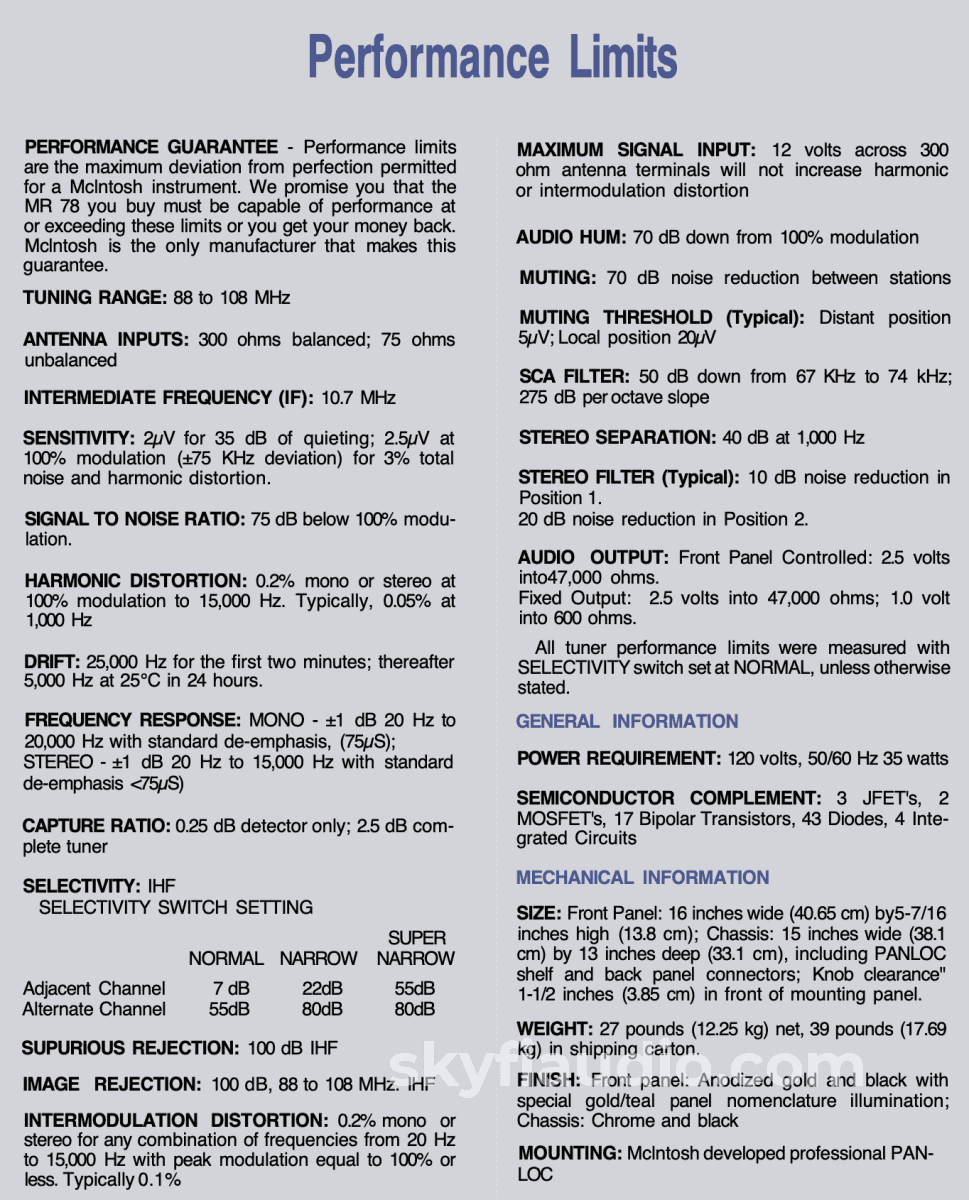
McIntosh MR78 Analog Tuner - The Best from McIntosh
Free Shipping on *ALL* Electronics (Excluding Speakers, Contiguous 48 US States Only)
Pickup currently unavailable at SkyFi 479

McIntosh MR78 Analog Tuner - The Best from McIntosh
Without Wood Cabinet ~ Price As Listed ($2499)
SkyFi 479
479 South Broad Street
Glen Rock NJ 07452
United States
Many believe this to be the best tuner EVER made.
In our opinion it's definitely in the top five.
The Consumer Electronics Hall of Fame: McIntosh MR 78 Tuner
"A young engineering genius used a computer to design a filter and the result was the greatest FM tuner ever built"
That engineering genius was Richard Modafferi, and if you reverse his initials you get the model prefix for a host of McIntosh Tuners...
We can carefully remove the dial bezel if you'd like. We find it to looks better and is also a bit better match alongside other more modern Mc equipment without the bezel. Your choice.
Fully tested, lubricated, and received new bulbs. Working as it should all around.
Available with an optional and official matching McIntosh Wood Cabinet. Simply select your choice during checkout.
Click below to add our recommended matching cables from Kimber Kable, all brand new as SkyFi is an official Kimber dealer.
Kimber Kable - RCA Interconnects
Please see our photos for full specifications, or the manual linked below.
McIntosh MR78 Tuner Owner's Manual
From the IEEE Spectrum Website:
Richard Modafferi was a senior engineer at McIntosh Laboratory from 1968 to 1974. His first stab at a new tuner that could do better was the MR 77. That model, introduced in 1970, was acclaimed among audiophiles—and it was the subject of an article by Modafferi in the November 1970, issue of IEEE Transactions on Broadcast and Television Receivers. And then Modafferi outdid himself with the MR 78 tuner, which came out in 1972.
The MR 78’s distinction was a new intermediate frequency filter, the culmination of a design that Modafferi had begun working on [PDF] as a graduate student at the Newark College of Engineering (now part of the New Jersey Institute of Technology) in the mid-1960s. He dubbed it the Rimo filter (a concatenation of the first two letters of his first and last name). In a superheterodyne radio receiver, which all FM receivers are, the incoming signal is mixed with that of a local oscillator to produce an intermediate frequency (IF) that is lower than that of the carrier frequency of the received signal. There are several reasons for doing this. A really big one is that the lower value of this IF makes it easier to filter out nearby sources of interference. Basically, Modafferi’s Rimo took a leap beyond existing IF filters by applying a computer to fine-tune the filter’s frequency response, and also by minimizing “intermodulation distortion,” which plagued IF filters at the time.
The SkyFi Testing Process for Tuners:
We start with a visual inspection of all internal components to make sure there are no signs of stress or aging. Capacitors are checked for telltale sings of bulging or leaking, resistors are checked for signs of overheating or cracking, and tubes are inspected for signs of stress overheating or cracking.
Then the tuner is thoroughly tested in our lab utilizing our professional Sencore SG80 FM Generator, which allows us to generate a reference FM signal of any frequency and amplitude, and then measure the resulting tuner output on our Sencore PR81 or oscilloscope.
This unit passed with flying colors and produced a natural and warm sounding output.
|
Item |
Included |
|
Original Box |
No |
|
Manual |
Yes and Online |
|
Remote |
N/A |
|
Cables |
Yes - Power |
|
Physical Condition |
8 |
|
Working Condition |
10 |
Choose options











